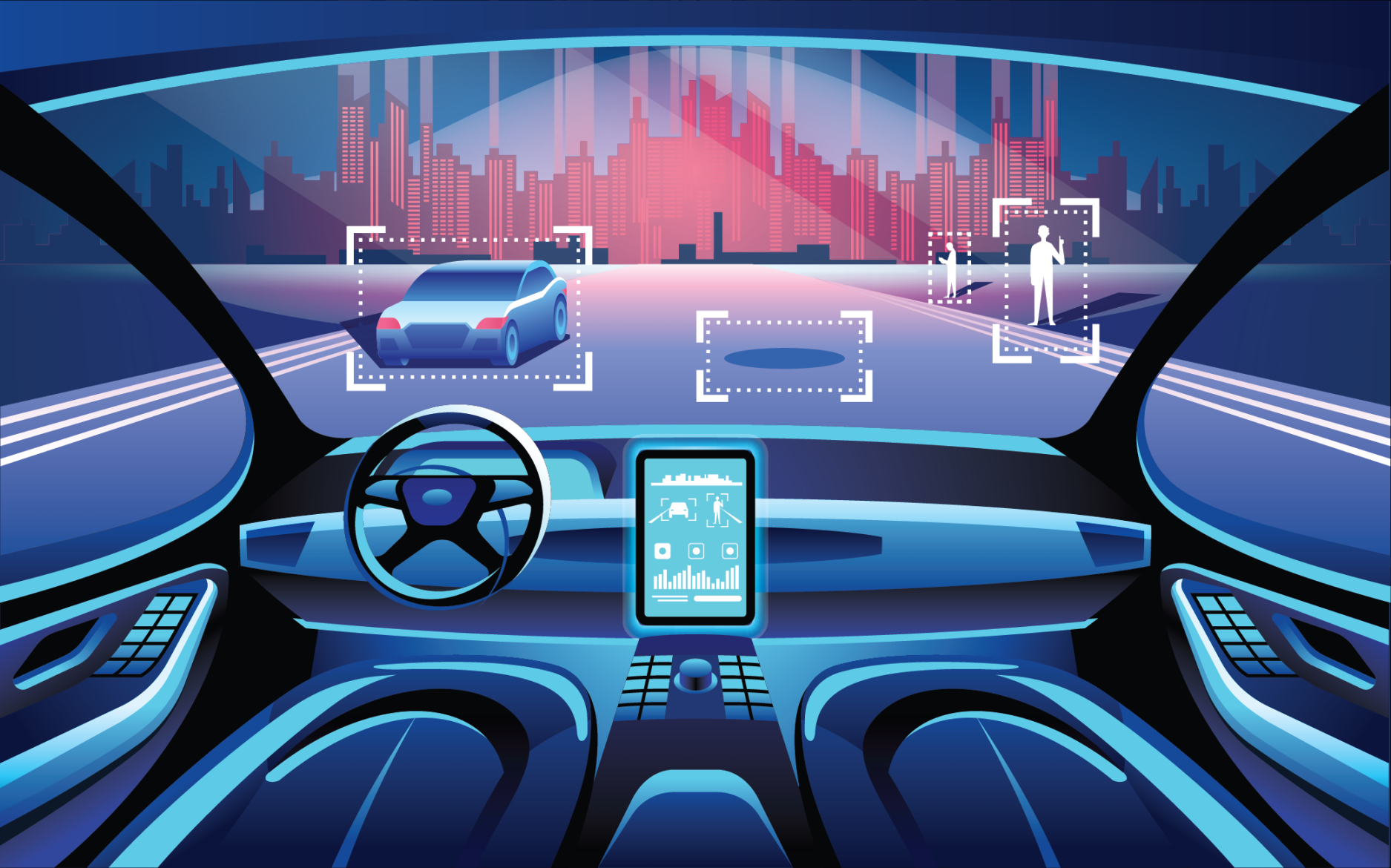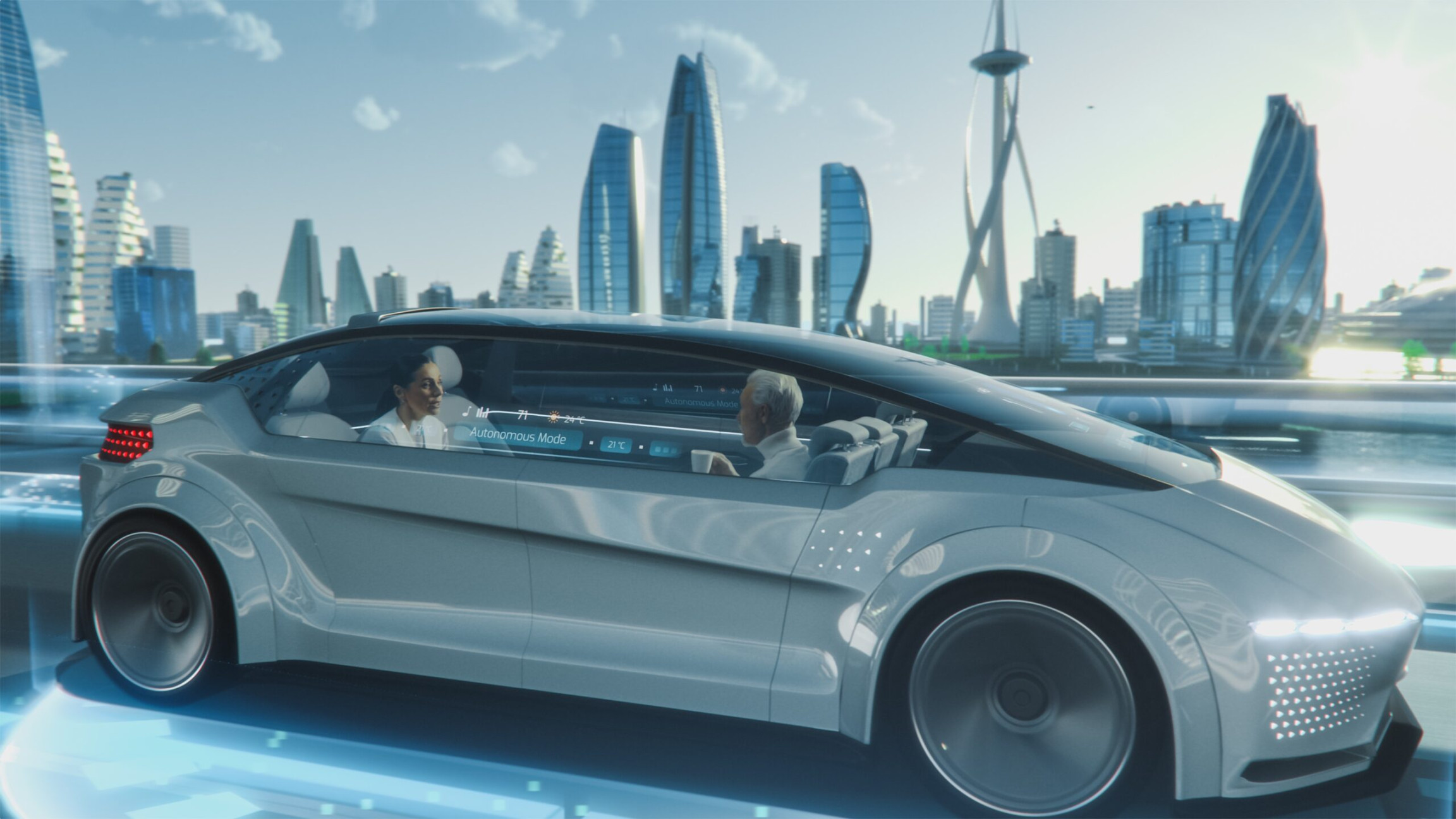Self-Driving Cars
What do you mean by Self-Driving Cars?
Self-driving cars, also known as autonomous vehicles, refer to automobiles that have the capability to navigate and operate without human input. These vehicles use a combination of advanced sensors, artificial intelligence, and GPS technology to perceive their surroundings and make decisions.
How do Self-Driving Cars work?
Self-driving cars function through a combination of sensors and technology. These vehicles are equipped with various sensors such as radars, lidars, cameras, and GPS systems, which continuously collect data about the car’s surroundings. The collected data is then processed by the vehicle’s onboard computer, which utilizes complex algorithms and artificial intelligence to interpret the information and make real-time decisions.

The artificial intelligence systems in self-driving cars use deep learning and machine learning algorithms to analyze and understand the environment. They can recognize and classify objects, detect road signs, and accurately predict the movements of pedestrians, cyclists, and other vehicles.
What is known about Self-Driving Cars?
Self-driving cars have been a subject of extensive research and development for several years. Companies like Tesla, Google’s Waymo, Uber, and traditional automakers have invested heavily in this technology. Significant progress has been made, and self-driving cars have already undergone extensive testing on public roads in various countries.

While self-driving cars have the potential to greatly enhance road safety and efficiency, there are still several challenges to overcome. These challenges include ensuring the reliability of the technology, addressing legal and regulatory concerns, and establishing public trust in autonomous vehicles.
Solution
To address the challenges associated with self-driving cars, rigorous testing and validation procedures are being conducted. Extensive simulation testing, as well as real-world trials, are carried out to improve the safety and reliability of self-driving cars. Additionally, governments and regulatory bodies are working to create appropriate guidelines and regulations to govern the operation of autonomous vehicles.
Collaboration between automakers, technology companies, and policymakers is crucial to ensure the successful integration of self-driving cars into society. Continued research and development efforts will contribute to further advancements in the technology, making self-driving cars safer and more widespread in the future.
Information about Self-Driving Cars
Self-driving cars have the potential to revolutionize the way we travel and transport goods. They offer benefits such as enhanced road safety, reduced traffic congestion, improved fuel efficiency, and increased accessibility for people with disabilities or limited mobility.
Autonomous vehicles can minimize human errors, which are often the cause of accidents on the road. With their ability to communicate and coordinate with each other, self-driving cars can optimize traffic flow and reduce the time spent in congestion.
Moreover, self-driving cars have the potential to provide transportation solutions for those who are unable to drive, such as the elderly or people with disabilities. They can offer a newfound level of independence and mobility to individuals who would otherwise rely on others for transportation.
About Self-Driving Cars in Casual English
Self-driving cars are like futuristic vehicles that can drive themselves without any human control. They use fancy technology and sensors to figure out what’s going on around them and make decisions on their own. It’s as if they have a super-smart brain that can see, hear, and understand the world just like a human can.
People have been working on self-driving cars for a while now, and they’ve made a lot of progress. Companies like Tesla, Google’s Waymo, and Uber are spending lots of money to make these cars a reality. They’ve even tested them on real roads, and it’s pretty cool to see them driving around without anyone touching the steering wheel.
Conclusion
Self-driving cars are an exciting innovation in the automotive industry. With their potential to improve road safety, reduce congestion, and increase accessibility, they offer a promising future for transportation. While there are challenges to overcome, ongoing research and collaboration will continue to push the boundaries of autonomous vehicle technology, bringing us closer to a world where self-driving cars are the norm.
Frequently Asked Questions about Self-Driving Cars
1. Are self-driving cars safe?
Self-driving cars are designed with safety as a top priority. They are equipped with advanced sensors and artificial intelligence systems that can detect and respond to potential hazards. However, further testing and refinements are necessary to ensure their reliability and minimize any risks.
2. How do self-driving cars navigate in complex situations?
Self-driving cars use a combination of sensors, cameras, lidars, and GPS systems to perceive their surroundings. With the help of advanced algorithms and artificial intelligence, they can understand complex traffic situations, recognize road signs, and make informed decisions to navigate safely.
3. Can self-driving cars be hacked?
As with any technology connected to the internet, there is a potential risk of hacking. However, extensive security measures are implemented to prevent unauthorized access to self-driving cars. Automakers and technology companies invest significant resources in ensuring the cybersecurity of autonomous vehicles.
4. When will self-driving cars become widely available?
The widespread availability of self-driving cars depends on various factors, including technological advancements, regulatory frameworks, and public acceptance. While some autonomous features are already integrated into certain vehicles, it may take several more years before fully autonomous vehicles are available for public use.
5. Will self-driving cars lead to job loss for professional drivers?
The introduction of self-driving cars may impact certain jobs that heavily rely on driving, such as truck drivers and taxi drivers. However, it is also expected to create new job opportunities in areas such as software development, vehicle maintenance, and transportation infrastructure management.